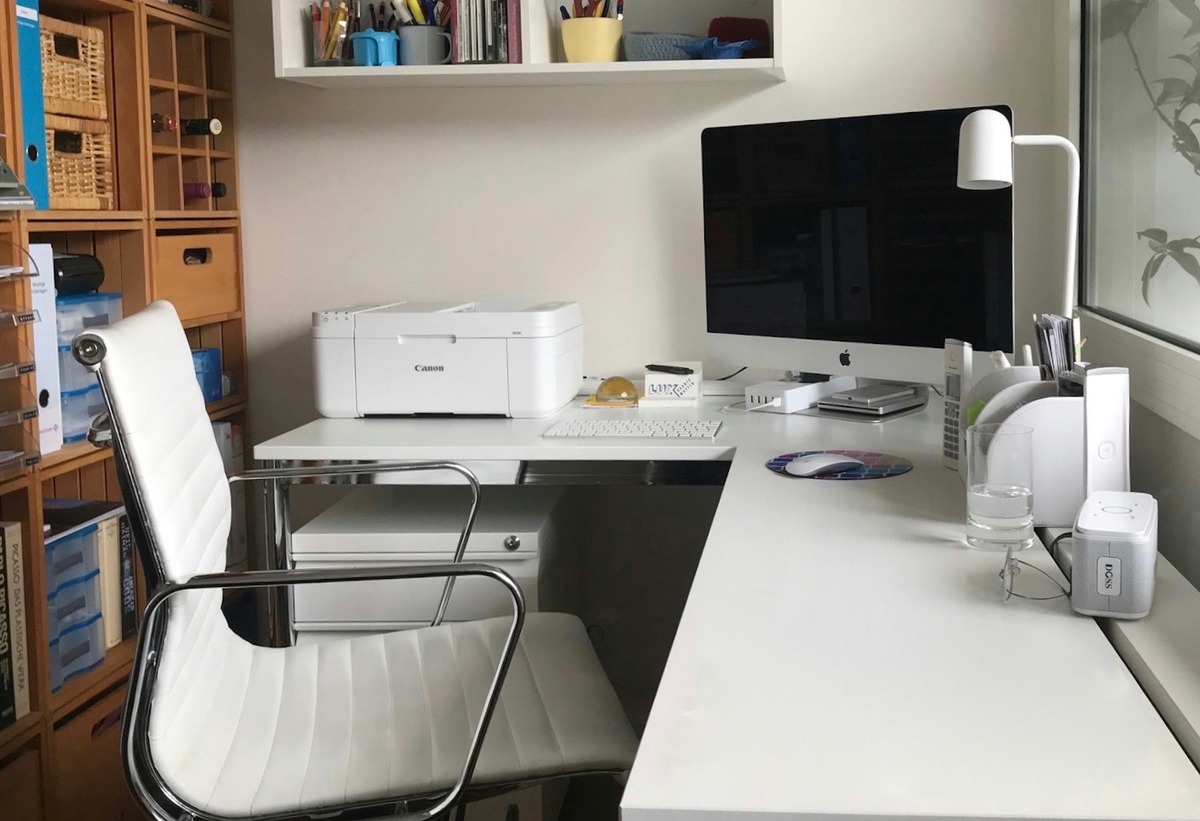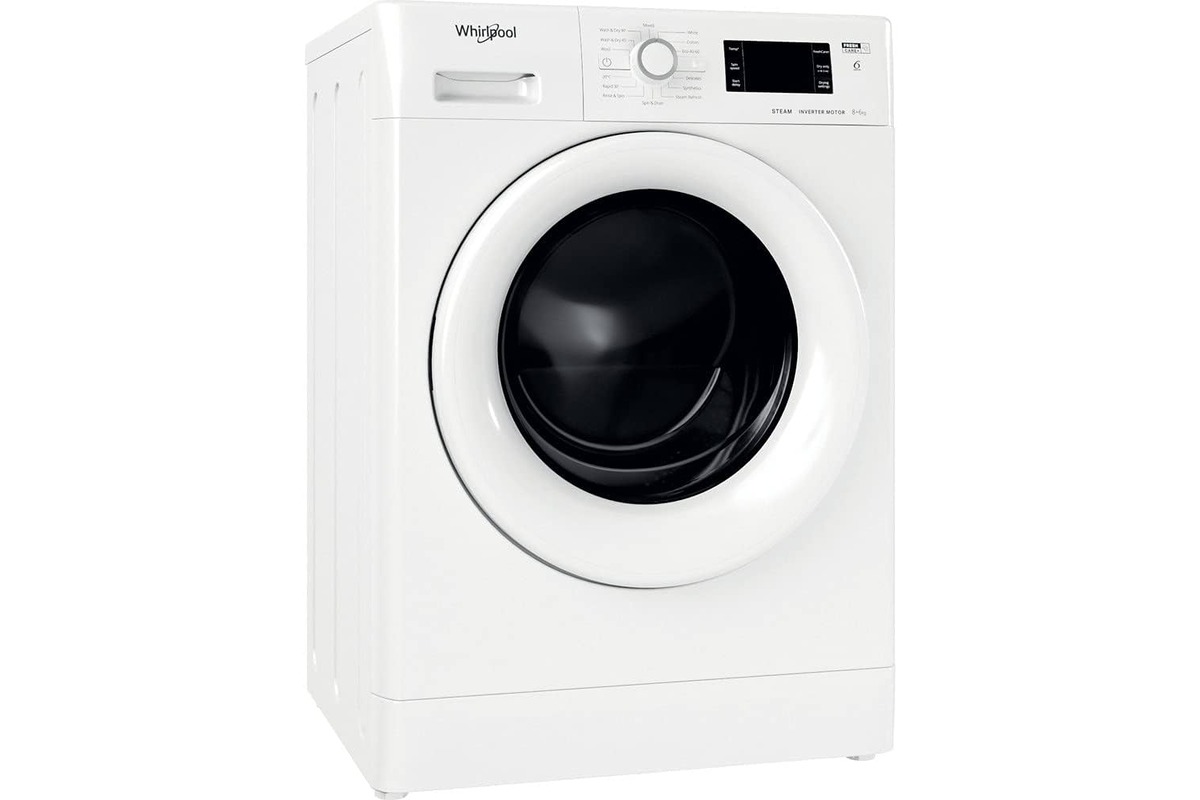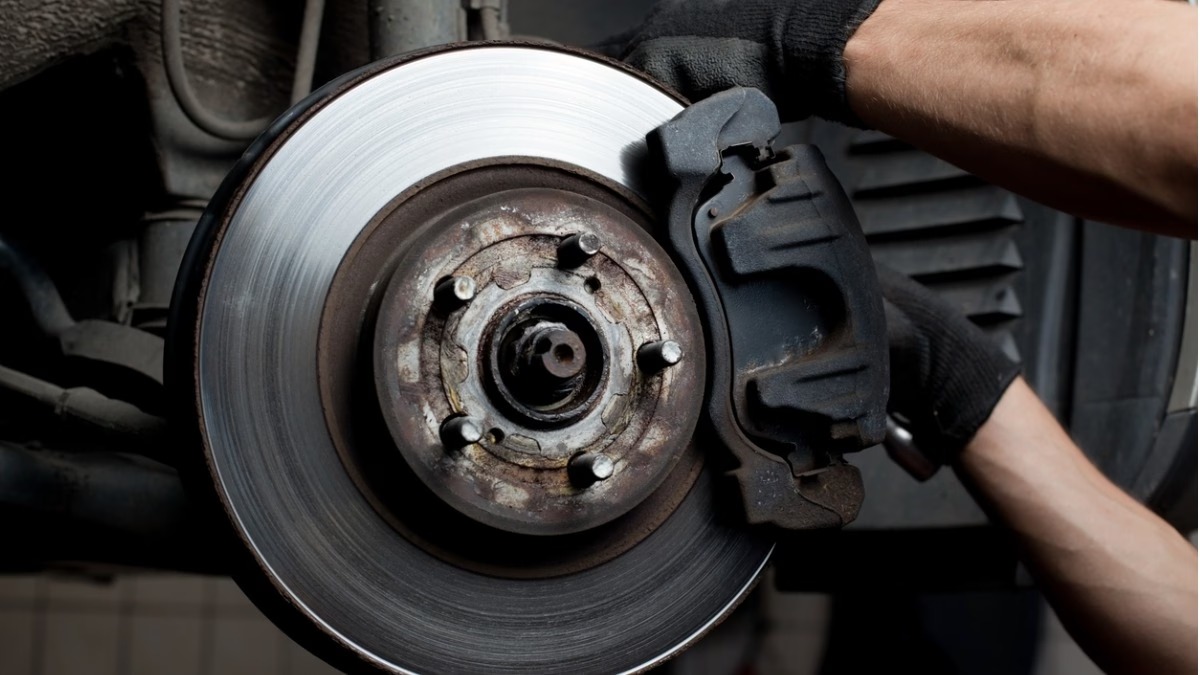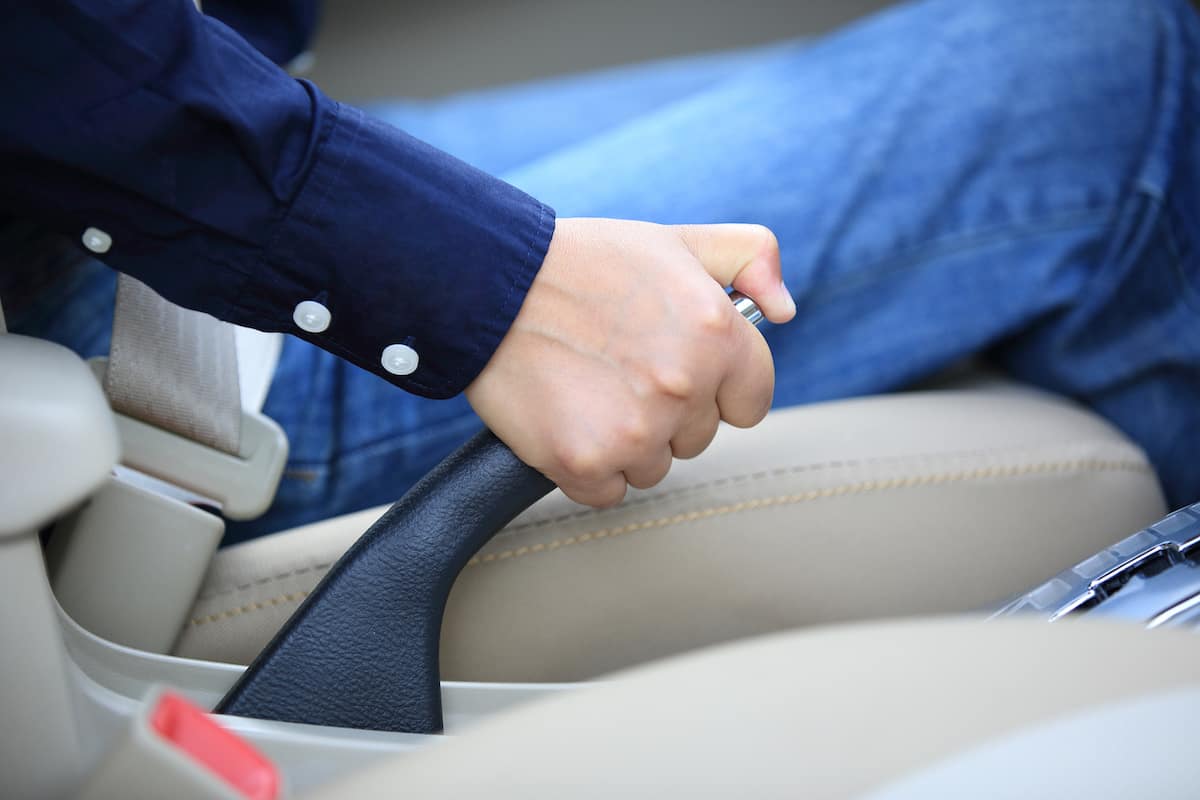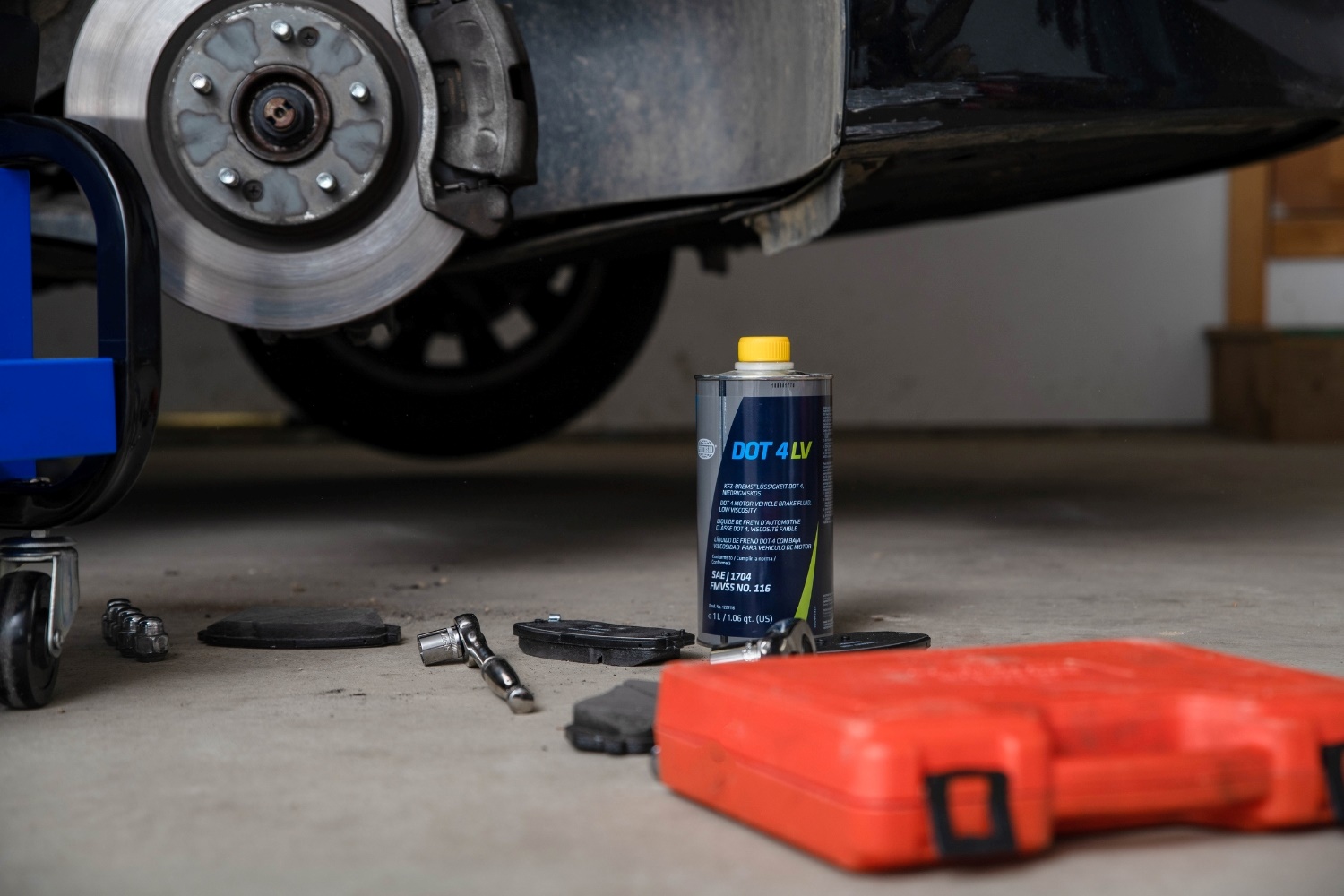Home>Automotive>Quick And Easy Brake Grinding Fix!
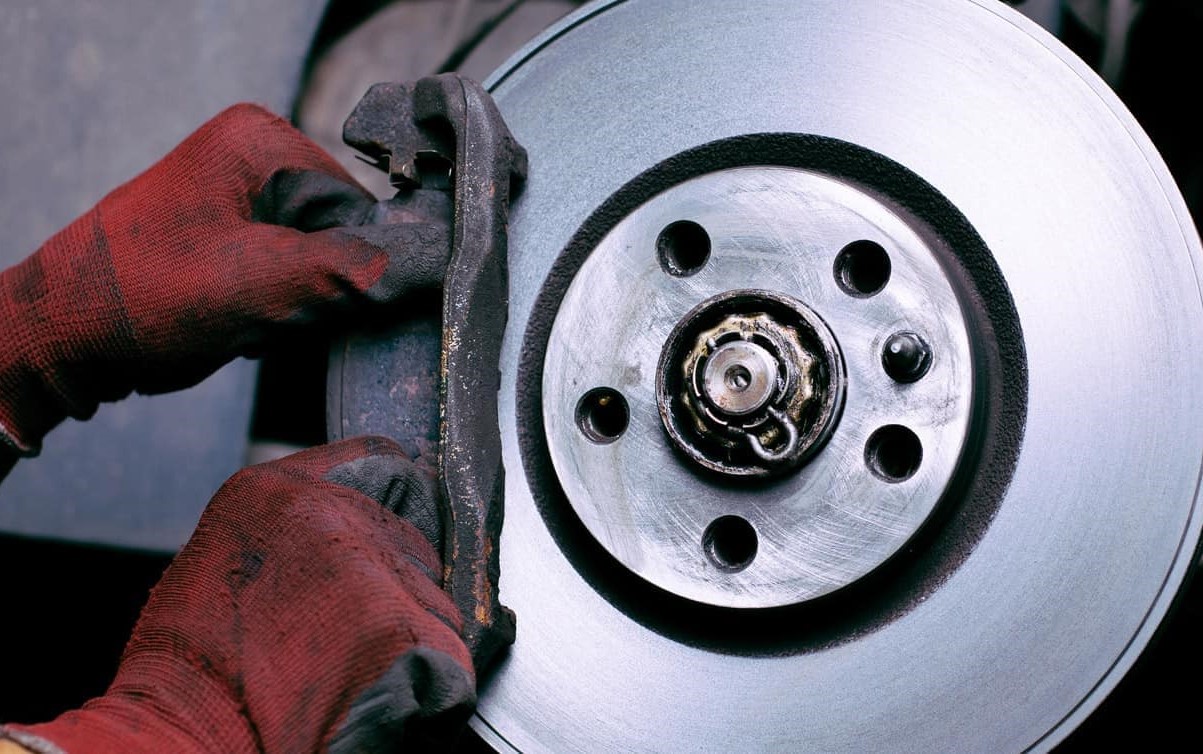

Automotive
Quick And Easy Brake Grinding Fix!
Published: January 23, 2024
Looking for a quick and easy solution to fix brake grinding? Our automotive experts have the answer you need. Learn how to resolve the issue today!
(Many of the links in this article redirect to a specific reviewed product. Your purchase of these products through affiliate links helps to generate commission for Noodls.com, at no extra cost. Learn more)
Table of Contents
Introduction
Brakes are an essential component of any vehicle, providing the critical function of slowing down or stopping the car when needed. However, encountering a grinding noise when applying the brakes can be a cause for concern and, if left unaddressed, may lead to more severe issues. The unsettling sound of metal grinding against metal can not only be alarming but also indicative of potential brake system problems that require immediate attention.
When brakes grind, it's often a warning sign that something within the braking system is amiss. This issue can stem from various factors, such as worn brake pads, damaged rotors, or the accumulation of debris and rust within the braking mechanism. Ignoring this warning sign can compromise the safety and performance of the vehicle, posing a risk to both the driver and other road users.
In this article, we will delve into the causes of brake grinding, explore quick and easy solutions to address this issue, and provide step-by-step instructions to effectively rectify brake grinding. By understanding the underlying reasons for this problem and learning how to resolve it efficiently, drivers can ensure the optimal functioning of their vehicle's braking system and maintain a safe driving experience. Let's embark on this journey to demystify brake grinding and equip ourselves with the knowledge and skills to tackle this issue head-on.
Understanding Brake Grinding
Brake grinding refers to the unpleasant noise that occurs when applying the brakes, often resembling the sound of metal rubbing against metal. This disconcerting noise can stem from various underlying causes within the vehicle's braking system. Understanding the factors that contribute to brake grinding is crucial in effectively addressing this issue and maintaining optimal vehicle safety.
One of the primary culprits behind brake grinding is worn brake pads. Over time, the friction material on the brake pads wears down, exposing the metal backing plate. When this occurs, the metal plate comes into direct contact with the rotor, resulting in the characteristic grinding noise. Additionally, worn brake pads can lead to decreased braking efficiency, compromising the vehicle's ability to slow down or stop effectively.
Furthermore, damaged or warped brake rotors can also contribute to brake grinding. Rotors that have become uneven or warped due to prolonged use or excessive heat can cause the brake pads to make irregular contact, resulting in a grinding sound when the brakes are applied. In such cases, addressing the root cause of the rotor damage is essential to prevent further deterioration of the braking system.
Accumulated debris, rust, or corrosion within the braking mechanism can exacerbate brake grinding. When foreign particles or rust build up on the brake pads or rotors, they can interfere with the smooth operation of the braking system, leading to friction-induced noise during braking. Regular maintenance and cleaning of the braking components can help mitigate the impact of debris and rust, reducing the likelihood of brake grinding.
In some instances, inadequate lubrication of the brake caliper slides or improper installation of brake components can also result in brake grinding. Insufficient lubrication can cause the brake caliper to stick, leading to uneven pressure on the brake pads and subsequent grinding noises. Additionally, improper installation of brake hardware or components can create friction points within the braking system, contributing to the occurrence of brake grinding.
By comprehending the diverse factors that can trigger brake grinding, drivers can proactively address potential issues within the braking system and take the necessary steps to rectify them. Identifying the specific cause of brake grinding is pivotal in implementing targeted solutions, ensuring the optimal performance and safety of the vehicle's braking system.
Understanding the intricacies of brake grinding empowers drivers to recognize the warning signs and take proactive measures to maintain the integrity of their vehicle's braking system. With this knowledge in hand, drivers can navigate the roads with confidence, knowing they are equipped to tackle brake grinding and uphold the safety and efficiency of their vehicle's braking mechanism.
Quick and Easy Solutions
Addressing brake grinding promptly is essential to maintain the safety and performance of a vehicle's braking system. Fortunately, there are quick and easy solutions available to mitigate brake grinding and restore the smooth, quiet operation of the brakes. By implementing these solutions, drivers can effectively resolve the issue and prevent further damage to the braking components.
Brake Pad Replacement:
Replacing worn brake pads is a fundamental yet highly effective solution to alleviate brake grinding. When the brake pads have worn down to the point where the metal backing plate is exposed, the resulting metal-on-metal contact causes the characteristic grinding noise. By replacing the worn brake pads with new, high-quality ones, drivers can eliminate the source of the grinding sound and restore optimal braking performance. This straightforward solution not only addresses brake grinding but also enhances the overall safety and reliability of the vehicle's braking system.
Rotor Resurfacing or Replacement:
In cases where damaged or warped brake rotors contribute to brake grinding, resurfacing or replacing the rotors is a viable solution. Resurfacing involves machining the rotor's surface to restore its smooth and even finish, eliminating irregularities that lead to brake grinding. Alternatively, if the rotors are severely damaged or excessively worn, replacing them with new, properly functioning rotors is recommended. By addressing rotor-related issues, drivers can eliminate the source of brake grinding and ensure that the brake pads make consistent, smooth contact with the rotors, effectively reducing friction-induced noise during braking.
Cleaning and Lubrication:
Regular cleaning and proper lubrication of the braking components are essential to prevent brake grinding caused by debris, rust, or inadequate lubrication. Thoroughly cleaning the brake pads, caliper slides, and rotor surfaces can remove accumulated debris and rust, promoting smooth, uninterrupted contact between the brake pads and rotors. Additionally, ensuring that the brake caliper slides are adequately lubricated with high-temperature brake grease can prevent sticking and uneven pressure on the brake pads, effectively reducing the likelihood of brake grinding. This simple yet impactful solution contributes to the longevity and optimal functioning of the braking system.
Inspection and Adjustment:
Conducting a comprehensive inspection of the entire braking system, including the calipers, hardware, and brake components, is crucial to identify any potential issues contributing to brake grinding. This inspection allows for the detection of misaligned or improperly installed brake components, which can create friction points and lead to grinding noises during braking. By identifying and rectifying these issues, drivers can eliminate the source of brake grinding and ensure that the braking system operates smoothly and quietly.
By implementing these quick and easy solutions, drivers can effectively address brake grinding and maintain the optimal performance and safety of their vehicle's braking system. These proactive measures not only alleviate the disconcerting noise associated with brake grinding but also contribute to a more enjoyable and secure driving experience.
Steps to Fix Brake Grinding
Addressing brake grinding is crucial to ensure the safety and performance of a vehicle's braking system. By following a series of systematic steps, drivers can effectively rectify brake grinding and restore the smooth, quiet operation of the brakes. Here's a comprehensive guide outlining the essential steps to fix brake grinding:
-
Assessment of Brake Components:
The first step in addressing brake grinding involves a thorough assessment of the braking system components. This includes inspecting the brake pads, rotors, calipers, and associated hardware for signs of wear, damage, or misalignment. By visually examining these components, drivers can identify the specific areas contributing to brake grinding and determine the appropriate course of action. -
Brake Pad Replacement:
If the assessment reveals worn brake pads with exposed metal backing plates, replacing the pads is necessary to eliminate brake grinding. Begin by safely lifting the vehicle and removing the wheels to access the brake calipers. Then, carefully detach the calipers, remove the worn brake pads, and install new, high-quality pads. Ensuring proper alignment and secure attachment of the calipers is essential to facilitate smooth, consistent contact between the new pads and the rotors. -
Rotor Inspection and Resurfacing:
Inspecting the brake rotors for signs of damage, warping, or uneven wear is crucial in addressing brake grinding. If the rotors exhibit irregularities, consider having them professionally resurfaced to restore a smooth, even surface. Alternatively, if the damage is extensive, replacing the rotors with new, properly functioning ones is recommended to eliminate the source of brake grinding. -
Cleaning and Lubrication:
Thoroughly cleaning the brake components and ensuring proper lubrication is essential to prevent brake grinding caused by debris, rust, or inadequate lubrication. Utilize a suitable brake cleaner to remove any accumulated debris and rust from the brake pads and rotor surfaces. Additionally, apply high-temperature brake grease to the caliper slides and contact points to facilitate smooth, even movement and prevent sticking, contributing to a reduction in brake grinding. -
Caliper and Hardware Inspection:
Conduct a detailed inspection of the brake calipers and associated hardware to identify any issues contributing to brake grinding. Ensure that the caliper slides move freely and are adequately lubricated to prevent uneven pressure on the brake pads. Additionally, check for proper alignment and installation of the brake components to eliminate potential friction points within the braking system. -
Test and Adjustment:
After completing the necessary repairs and replacements, conduct a comprehensive test of the braking system to ensure that the grinding noise has been effectively addressed. Test the brakes at varying speeds and intensities to verify the smooth, quiet operation of the braking system. If any residual grinding is detected, reevaluate the specific components and make further adjustments as needed to achieve optimal braking performance.
By following these systematic steps to fix brake grinding, drivers can effectively address this issue and restore the optimal safety and functionality of their vehicle's braking system. Proactive maintenance and timely intervention are crucial in mitigating brake grinding and ensuring a secure and enjoyable driving experience.
Conclusion
In conclusion, addressing brake grinding is paramount for maintaining the safety and performance of a vehicle's braking system. By understanding the underlying causes of brake grinding and implementing quick and easy solutions, drivers can effectively mitigate this issue and ensure the smooth, quiet operation of their brakes. The comprehensive steps outlined for fixing brake grinding provide a systematic approach to identifying, addressing, and resolving the sources of this disconcerting noise, ultimately contributing to a more secure and enjoyable driving experience.
It is essential for drivers to recognize the warning signs of brake grinding and take proactive measures to address this issue promptly. Worn brake pads, damaged rotors, accumulated debris, and inadequate lubrication are among the common factors contributing to brake grinding. By proactively addressing these issues through brake pad replacement, rotor resurfacing or replacement, cleaning, lubrication, and thorough inspection, drivers can effectively eliminate the source of brake grinding and uphold the integrity of their vehicle's braking system.
Moreover, the quick and easy solutions presented in this article offer drivers practical and actionable methods to alleviate brake grinding. From replacing worn brake pads to cleaning and lubricating the braking components, these solutions empower drivers to take charge of their vehicle's maintenance and ensure optimal braking performance. Additionally, the systematic steps outlined for fixing brake grinding provide a structured approach to identifying and rectifying the underlying causes of this issue, enabling drivers to restore the smooth, quiet operation of their brakes with confidence.
By addressing brake grinding in a timely and proactive manner, drivers can safeguard the safety of their vehicle and enhance their overall driving experience. The knowledge and insights gained from understanding brake grinding and its resolution equip drivers with the tools to maintain their vehicle's braking system effectively. Moreover, by implementing these solutions and following the systematic steps for fixing brake grinding, drivers can uphold the safety, reliability, and performance of their vehicle's braking system, ensuring a secure and seamless driving experience for themselves and other road users.
In essence, addressing brake grinding is not only a matter of maintenance but also a fundamental aspect of ensuring vehicle safety. By leveraging the information and solutions provided in this article, drivers can navigate the roads with confidence, knowing they have the knowledge and capability to tackle brake grinding effectively. Embracing proactive maintenance and timely intervention, drivers can uphold the integrity of their vehicle's braking system and enjoy a smoother, quieter, and safer driving experience.
